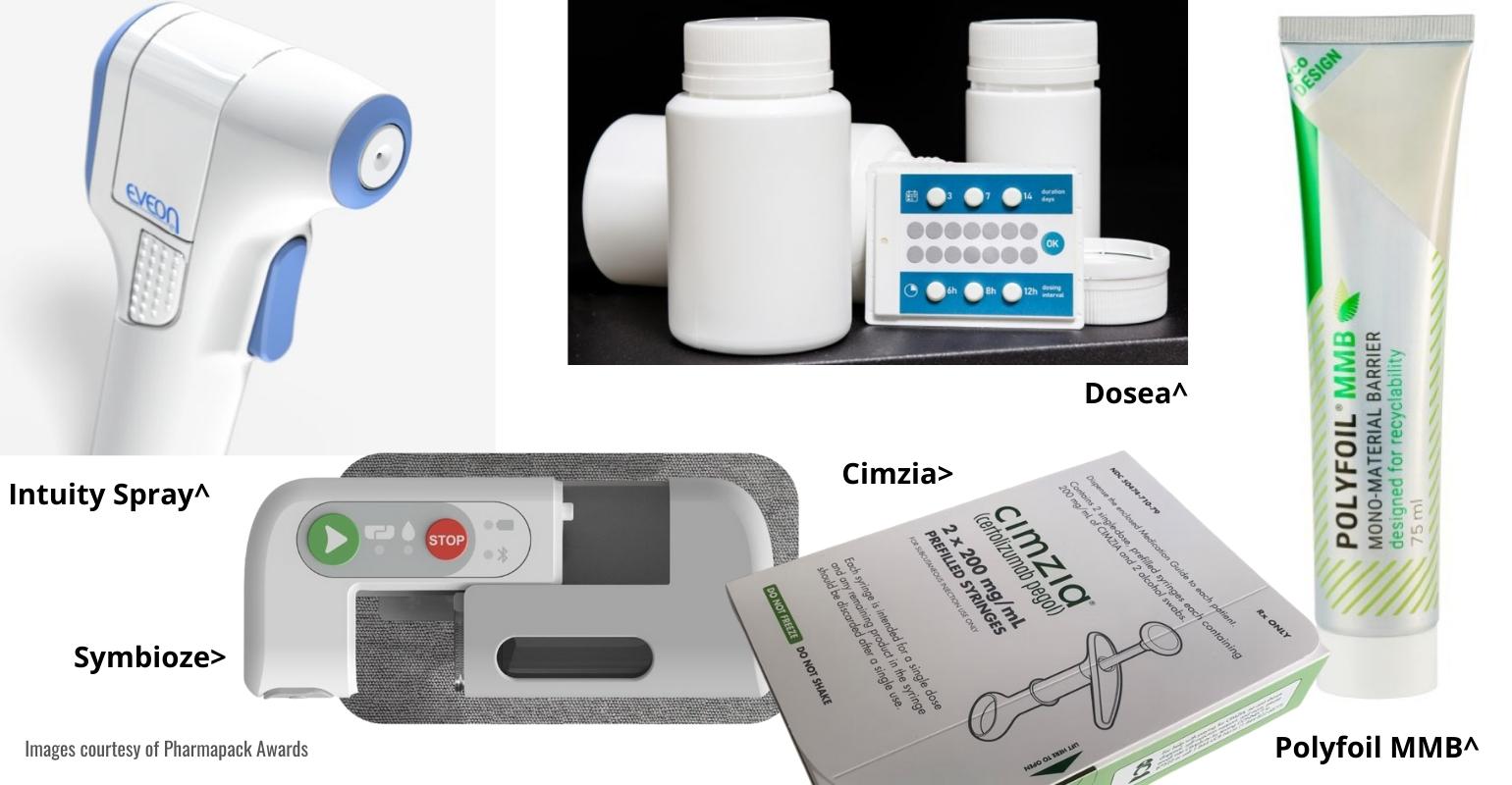The pharmaceutical industry is in a constant state of evolution, driven by technological advancements and the need for more effective and secure packaging solutions.
The packaging of pharmaceutical products is a critical aspect of drug delivery, safety, and brand representation. In recent years, several groundbreaking innovations have revolutionized pharmaceutical packaging.
Let’s now explore the top packaging industry innovations for pharmaceuticals that you need to know.
1. Smart Packaging with IoT Integration
One of the most significant advancements in pharmaceutical packaging is the integration of the Internet of Things (IoT). Smart packaging, equipped with sensors and data-transmitting capabilities, is transforming the industry.
These intelligent packages can monitor various parameters, such as temperature, humidity, and tampering, in real-time. The data collected is transmitted to a central database, where it can be monitored by pharmaceutical companies and healthcare providers.
Key Benefits:
- Temperature Control: Smart packaging ensures that temperature-sensitive pharmaceuticals remain within specified ranges during transportation and storage, preventing spoilage and maintaining drug efficacy.
- Enhanced Safety: The tamper-evident features of smart packaging help prevent counterfeit products from entering the market and protect patients from consuming potentially harmful medications.
- Improved Compliance: Smart packaging can incorporate reminders and dose-tracking capabilities to help patients adhere to their medication schedules.
Example: The Med-ic® smart blister package is an IoT-integrated packaging system that tracks when medication doses are removed, helping to improve medication adherence and compliance.
2. Antimicrobial Packaging
Antimicrobial packaging is a crucial innovation in the pharmaceutical industry, particularly for products that need protection from contamination.
These packaging materials are designed to inhibit the growth of microorganisms, such as bacteria, fungi, and viruses, on the surface of the packaging. This added layer of protection prevents contamination and ensures the safety of pharmaceutical products.
Key Benefits:
- Extended Shelf Life: Antimicrobial packaging helps pharmaceutical products maintain their quality and efficacy for a longer duration.
- Reduced Risk of Infections: Packaging with antimicrobial properties is especially critical for sterile products, such as injectable medications and surgical supplies.
- Enhanced Safety: By preventing microbial growth, antimicrobial packaging helps reduce the risk of infection associated with the use of pharmaceuticals.
Example: Ampac Flexibles developed a SilverSure™ antimicrobial film that is used to create sterile packaging for medical devices and pharmaceuticals. The film incorporates silver ions to inhibit microbial growth.
3. Child-Resistant Packaging
Child-resistant packaging is a well-established innovation, but it continues to evolve to provide better safety for households with young children.
These packages are designed with mechanisms that require dexterity and strength to open, making it difficult for children to access the contents.
Child-resistant packaging must be bought from a certified packaging supplier is crucial for medications and products that pose potential risks to children.
Key Benefits:
- Child Safety: Child-resistant packaging reduces the risk of accidental poisoning or ingestion of unintended substances by young children, such as when packaging cannabis or packaging edibles.
- Regulatory Compliance: Many countries have stringent regulations requiring child-resistant packaging for specific pharmaceutical products.
- Brand Reputation: The use of child-resistant packaging demonstrates a commitment to safety and helps build trust among consumers.
Example: The CRx Pack™ is a child-resistant, senior-friendly blister packaging system that combines safety and ease of use. It incorporates a push-button mechanism to access individual doses.
4. Sustainable Packaging
As sustainability gains importance across all industries, including pharmaceuticals, sustainable packaging has become a significant trend.
Sustainable packaging focuses on reducing environmental impact through the use of eco-friendly materials, minimal waste, and responsible manufacturing processes.
Pharmaceutical companies are increasingly seeking ways to make their packaging more sustainable.
Key Benefits:
- Environmental Responsibility: Sustainable packaging reduces the carbon footprint of pharmaceutical products and minimizes waste.
- Cost Efficiency: Sustainable packaging can lead to cost savings by reducing the use of materials and energy during production.
- Consumer Appeal: Eco-conscious consumers are more likely to choose products with sustainable packaging, and this choice can positively impact a brand’s image.
Example: Amcor, a global packaging company, offers a range of sustainable packaging solutions for pharmaceutical products, including recyclable and biodegradable materials.
5. Serialization and Track-and-Trace
Serialization and track-and-trace technologies have become essential in the pharmaceutical industry to combat counterfeiting and ensure the authenticity of products.
Serialization involves assigning a unique serial number to each individual product unit, while track-and-trace systems enable the monitoring of a product’s journey through the supply chain.
Key Benefits:
- Counterfeit Prevention: Serialization and track-and-trace technologies help verify the authenticity of pharmaceutical products and reduce the circulation of counterfeit drugs.
- Supply Chain Visibility: These systems provide better visibility into the supply chain, making it easier to track and manage products, ensuring quality and safety.
- Regulatory Compliance: Many countries have regulations in place that require pharmaceutical manufacturers to implement serialization and track-and-trace solutions.
Example: Companies like TraceLink provide cloud-based serialization and track-and-trace solutions for pharmaceutical manufacturers to comply with global regulations and ensure supply chain visibility.
6. Biodegradable and Edible Packaging
Biodegradable and edible packaging are emerging as innovative solutions for reducing packaging waste and improving patient convenience.
Biodegradable packaging materials break down naturally over time, while edible packaging offers an eco-friendly and convenient way to consume pharmaceuticals.
Key Benefits:
- Environmental Impact: Biodegradable packaging reduces the environmental impact of packaging materials, as they decompose and return to the environment.
- Consumer-Friendly: Edible packaging can improve the patient experience, particularly for pediatric and geriatric populations, as it eliminates the need to swallow pills.
- Compliance and Convenience: Edible packaging can enhance medication compliance, especially for patients who have difficulty swallowing pills or capsules.
Example: Apeel Sciences has developed an edible, plant-based coating that can be applied to pharmaceutical products. This coating is designed to improve drug delivery and can be consumed along with the medication.
7. QR Codes for Information Access
QR (Quick Response) codes are being increasingly used on pharmaceutical packaging to provide easy access to important information. By scanning the code with a smartphone or a dedicated QR code reader, consumers and healthcare professionals can access details about the medication, such as dosage instructions, side effects, and manufacturer information.
Key Benefits:
- Enhanced Information: QR codes allow for more in-depth information to be provided without cluttering the packaging.
- Easy Access: Consumers can quickly access information they need, fostering better understanding of the medication.
- Interactive Features: QR codes can link to interactive elements like instructional videos, helping patients with proper usage.
Example: Many pharmaceutical companies use QR codes on their product packaging, which when scanned, lead to webpages with comprehensive information about the medication.
8. 3D Printing for Personalized Dosages
3D printing technology is making inroads into pharmaceutical packaging by enabling the creation of personalized dosage forms.
With 3D printing, pharmaceutical companies can produce medications tailored to individual patient needs, adjusting factors like dosage strength, size, and release characteristics.
Key Benefits:
- Personalization: 3D printing allows for personalized medications, improving patient outcomes and medication adherence.
- Complex Structures: It can create intricate dosage forms that may be challenging to produce with traditional manufacturing methods.
- Reduced Waste: 3D printing can reduce the need for excess packaging, as dosages can be tailored precisely to the patient’s needs.
Example: Aprecia Pharmaceuticals developed a 3D printing platform called ZipDose® Technology, which allows for the production of high-dose medications with precise control over the release of active ingredients.
9. Braille and Tactile Packaging
Braille and tactile packaging are innovations aimed at improving accessibility for visually impaired individuals. Braille is a system of raised dots that can be read through touch, and tactile packaging includes other physical features that help individuals identify products.
Key Benefits:
- Accessibility: Braille and tactile packaging make pharmaceutical products more accessible to individuals with visual impairments.
- Regulatory Compliance: Many countries have regulations requiring braille or tactile features on pharmaceutical packaging to ensure accessibility.
- Enhanced Independence: These innovations empower visually impaired individuals to manage their medications independently.
Example: Various pharmaceutical companies incorporate braille and tactile features on their packaging to enhance accessibility for visually impaired individuals.
10. Nanotechnology in Packaging
Nanotechnology is playing a significant role in pharmaceutical packaging by offering advanced materials and delivery systems. Nano-sized particles and materials are being used to create packaging solutions with enhanced barrier properties and drug release mechanisms.
Key Benefits:
- Improved Drug Stability: Nanomaterials in packaging can enhance the stability of pharmaceutical products by reducing exposure to oxygen and moisture.
- Precise Drug Release: Nanotechnology can be used to develop packaging materials that control the release of drugs, improving dosing accuracy.
- Extended Shelf Life: Nanotechnology can contribute to the extended shelf life of pharmaceutical products by preventing degradation.
Example: Nanosun™, a nanotechnology company, focuses on developing nano-based packaging solutions to enhance the shelf life and safety of pharmaceuticals.
Conclusion
The pharmaceutical packaging industry is continuously evolving to meet the changing demands of the healthcare sector and consumers.
These innovations in pharmaceutical packaging not only address the need for safety, compliance, and product integrity but also aim to enhance the patient experience, reduce environmental impact, and improve accessibility. Staying updated on these trends and adopting relevant innovations can provide pharmaceutical companies with a competitive edge in an ever-evolving market.
As the industry continues to embrace technology and sustainability, we can anticipate even more transformative packaging innovations in the future.



